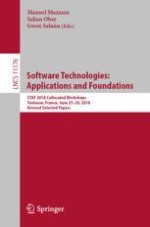2018 | OriginalPaper | Chapter
Automated Consistency Preservation in Electronics Development of Cyber-Physical Systems
Authors : Daniel Zimmermann, Ralf H. Reussner
Published in: Software Technologies: Applications and Foundations
Publisher: Springer International Publishing
Activate our intelligent search to find suitable subject content or patents.
Select sections of text to find matching patents with Artificial Intelligence. powered by
Select sections of text to find additional relevant content using AI-assisted search. powered by
